Deep in the heart of Texas, a hunter’s paradise awaits! From the vast open plains to the thick piney woods, Texas is bursting with wildlife waiting to be discovered. Whether you’re after a majestic white-tailed deer or the swift-flying dove, this Lone Star State promises an adventure like no other. Ready your gear and set your sights on Texas – where hunting dreams come alive!
In this comprehensive guide, we have covered everything you need to know about hunting in Texas. What type of animals can you hunt here, where to find them, hunting seasons, and license information: all the information is right here.
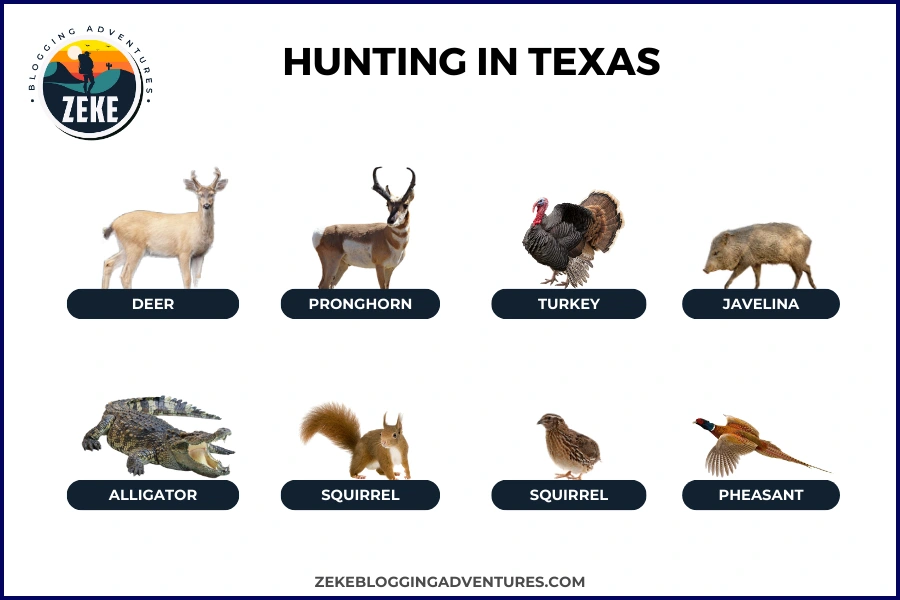
What Can You Hunt in Texas?
In Texas, you can hunt many animals depending on the season and with the right permits. Some of the state’s most sought-after game includes white-tailed deer, mule deer, Rio Grande wild turkeys, quail, dove, pheasant, and rabbits.
If waterfowl hunting is more your style, then ducks and geese await! For something a little different, there are exotic species like nilgai antelope or blackbuck which can be hunted on private ranches in certain areas. To ensure an enjoyable (and legal) outing, it’s important to check TPWD (Texas Parks & Wildlife Department) regulations before you head out as bag limits and required licenses vary by animal type and location.
Deer
From white-tailed to mule and everything in between, the Lone Star State has no shortage of amazing species for hunters to track. It has over four million acres of public land perfect for taking your skills out for a spin – not to mention the mild climate that allows year-round hunting without any harsh weather conditions!
For anyone looking to get into deer hunting, you need one key ingredient: patience. These animals are incredibly smart and can quickly sense when something doesn’t feel right; it’s up to the hunter to use this knowledge wisely.
Setting up near food sources like corn or soybean fields is an excellent way to increase your chances as they tend to frequent these areas on a daily basis. Using calls or scents can also be effective tools in attracting them to you – just make sure to follow all regulations set by the state first.
Also, never forget basic firearm safety rules; respect each weapon used and always keep aware of what’s going on around you at all times while outdoors.
White-tailed Deer Season Texas
| Season | Dates | Zones |
| Archery only | Sep 30 – Nov 03 | All Zones |
| General | Nov 04 – Jan 07 | North Zone |
| General | Nov 04 – Jan 21 | South Zone |
| Muzzleloader | Jan 08 – Jan 21 | Specific Counties |
| Special Late | Jan 08 – Jan 21 | North Zone |
| Special Late | Jan 22 – Feb 04 | South Zone |
| Youth only | Oct 28 – Oct 29, Jan 08 – Jan 21 | North Zone |
| Youth only | Oct 28 – Oct 29, Jan 08 – Jan 21 | South Zone |
Mule Deer Season Texas
| Season | Dates | Zones |
| General | Nov 18 – Dec 03 | Panhandle |
| General | Nov 24 – Dec 10 | Trans-Pecos |
| General | Nov 24 – Dec 10 | Brewster, Pecos, Terrell Counties |
| Archery | Sep 30 – Nov 03 | All Counties |
| Archery | Sep 30 – Nov 03 | Brewster, Pecos, Terrell Counties |
Pronghorn
Contrary to popular belief, pronghorn are not actually antelopes–they are their own unique species found only in North America! And don’t be fooled by their size; these speedy critters can reach speeds up to 60 miles per hour, making them second only to cheetahs when it comes to land animals. You’ll need all your hunting prowess just to keep up with ’em!
When you get ready for your next hunt, take note that pronghorns prefer open grasslands and shrublands as habitats. If you want any chance of success at spotting one from afar, make sure you’ve got good binoculars and some serious stealth skills handy.
As far as gear goes: .270 or .30-06 rifles will do the job nicely for flat-shooting cartridges. Pronghorn season usually runs in October in Texas so there’s plenty of time to plan out an epic excursion into the wild.
But if chasing after fast-running critters isn’t quite your style, then try catching sight of them during sunrise or sunset instead — nothing beats watching herds gracefully galloping across those golden plains!
Pronghorn Season (via Permit only)
| Season | Dates | Zones |
| Regular | Sep 30 – Oct 15 | 41 out of 254 counties |
Javelina
Javelinas, native to Texas and found in regions like the Hill Country, South Texas, and Trans-Pecos are social animals that live in herds of up to 20. They have a unique look with their grayish-black hair and white “collared” neckband.
Hunting these creatures requires skill as they have an acute sense of smell and hearing which makes them hard to approach undetected. The best time for hunting is during breeding season from January through March when males become aggressive making it easier for hunters to locate them by following vocalizations such as grunts or squeals.
When it comes to weaponry, we suggest a rifle or bow with at least 40 pounds of draw weight due to their tough hides & thick skulls which require enough power for humane kills. Safety should always be your top priority – only shoot if you can make out clear shot on target!
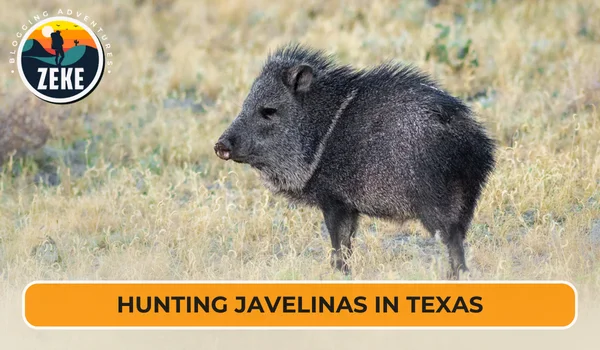
Javelina Season
| Season | Dates | Zones |
| Regular | Oct 01 – Feb 25 | North Zone |
| Regular | Sep 01 – Aug 31 | South Zone |
Turkey
Hunting wild turkeys in Texas is an exciting and challenging adventure. Three species of these birds, the Eastern, Rio Grande, and Merriam’s can all be found in various regions throughout the state. The Eastern turkey resides in the east while its cousin, the Rio Grande roams central to southern Texas; meanwhile, Merriam’s are spotted mainly near mountains out west.
Wild turkeys have keen senses which make them difficult prey for hunters; they spot movement from afar and run away quickly if spooked. To increase your chances of success during hunting season, you must remain still and dress accordingly – camouflage clothing is a must!
Male turkeys also gobble loudly during this time as part of their mating ritual so keep your ears open too. When it comes to gear, we suggest using #4 or #5 shot with a shotgun for optimal results when taking down these big birds. With patience and persistence, you will soon find yourself capable enough to land that trophy gobbler!
Wild Turkey Season Texas
| Season | Dates | Zone |
| Archery | Sep 30 – Nov 03 | All Zones |
| Fall | Nov 04 – Jan 07 | North Zone |
| Fall | Nov 04 – Jan 21 | South Zone |
| Fall | Nov 04 – Feb 25 | Brooks, Kenedy, Kleberg, & Willacy Counties |
| Spring | Mar 30 – May 12 | Rio Grande – North Zone |
| Spring | Mar 16 – Apr 28 | Rio Grande – South Zone |
| Spring | Apr 01 – Apr 30 | Rio Grande – Special |
| Spring Eastern Turkey | Apr 22 – May 14 | All |
| Youth only | Oct 28 – Oct 29, Jan 08 – Jan 21 | North Zone |
| Youth only | Oct 28 – Oct 29, Jan 22 – Feb 04 | South Zone |
| Youth only | Mar 23 – Mar 24, May 18 – May 19 | Rio Grande – North Zone |
| Youth only | Mar 09 – Mar 10, May 04 – May 05 | Rio Grande – South Zone |
Alligator
At first glance, alligators in Texas can appear intimidating due to their size – some reaching up to 18 feet long! But these predators are surprisingly swift and powerful swimmers. That’s why it’s important to have the proper permits and licenses before hunting them. And of course, don’t forget top-notch gear like a reliable boat or rifle/bow for taking down your prey.
When you’re on the hunt, patience is key as alligators can be quite elusive at times. When you finally locate one, aim true for their soft spot behind the eyes for a clean kill – remember every shot counts in this game! Respect these creatures by following all safety regulations; conservation is essential if we want future generations to appreciate our natural resources too.
Alligator Season TX
| Season | Dates |
| Core | Sep 10 – Sep 30 |
| Non-core | Apr 01 – Jun 30 |
Squirrel
When it comes to squirrels in Texas, two species reign supreme – the eastern gray and fox. The former is smaller, lurking in wooded areas; while the latter tends to inhabit open fields and farms. No doubt, these critters are fast-moving targets that prove a challenge for hunters of all skill levels!
And they don’t just provide entertainment either – their lean meat has a slightly nutty flavor that makes them popular among Texans who love cooking up some delicious squirrel stew or frying them with cornmeal batter.
But before you can enjoy any of this tasty meat, make sure you have your licenses and permits sorted out first – no one wants any trouble from our friendly game wardens!
As for weaponry? A shotgun works well due to its range accuracy; however, if you’re feeling confident, then .22 caliber rifles do just fine too. Also, scout around food sources like acorn trees or cornfields as chances of success increase when hunting near these spots.
Squirrel Season Texas
| Season | Dates | Zones |
| General | Oct 01 – Feb 25 | East Texas |
| General | May 01 – May 31 | East Texas |
| General | Sep 01 – Aug 31 | All Other Counties |
| Youth only | Sep 23 – Sep 24 | East Texas |
Pheasant
The Texas pheasant is a beloved game bird for hunters across the state. From late fall to early spring, these majestic creatures can be found scattered throughout the Panhandle, South Plains, and Rolling Plains regions. Hunting them requires careful planning and skillful tactics – luckily there are plenty of ways to increase your chances of success while hunting in Texas!
To ensure you bag your limit, it’s important to have a well-trained bird dog by your side. These four-legged companions have an excellent sense of smell that allows them to sniff out even the most hidden pheasants in tall grasses or shrubs near agricultural fields or water sources like creeks or ponds. It’s also helpful if you’re familiar with their habitat so scout potential hunting spots beforehand for best results.
Equipping yourself with the right gear is also essential when it comes down to taking home some dinner from this hunt – we suggest using a 12 or 20 gauge shotgun fitted with improved chokes along with camouflage clothing as they tend spot movement easily due to their keen eyesight.
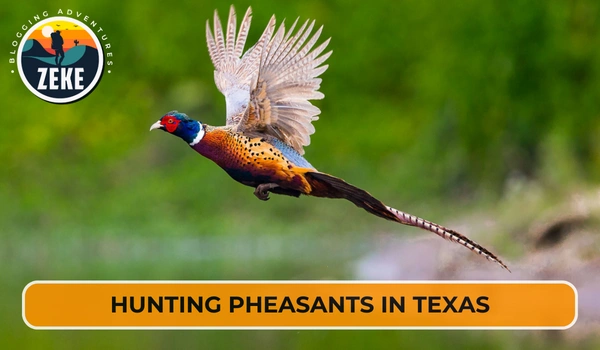
Pheasant Season TX
| Season | Dates | Zones |
| General | Dec 02 – Dec 31 | Panhandle |
Quail
Texas is an incredible place to go quail hunting! Home to four species of these birds – bobwhite, scaled, Gambel’s, and Montezuma, each has its own unique characteristic that makes it a worthwhile challenge for even the most seasoned hunter. Of them all, bobwhites are especially sought after due to their distinct call and quick flight.
What sets Texas apart when it comes to quail hunting is the sheer variety of terrain available; from rolling hills to densely packed brush country hunters never know what they’ll come across next.
Of course, this also means that these crafty creatures can easily blend into their surroundings so having a well-trained bird dog by your side is essential if you wish to have any success. They will flush them out as well as retrieve them once down – invaluable assistance when tracking elusive quarries like quails!
Timing is everything too: although the season runs from October through February with peak times in November/December – bear in mind some areas require permits or leases for private land so make sure you research before setting off on your hunt.
Quail Season TX
| Season | Dates | Bag Limit |
| Quail (Statewide) | Oct 28 – Feb 25 | 15 per day |
Dove Season TX
| Season | Dates | Bag Limit |
| Regular North Zone | Sep 01 – Nov 12, Dec 15 – Dec 31 | 12 per day |
| Regular Central Zone | Sep 01 – Oct 29, Dec 15 – Jan 14 | 12 per day |
| Regular South Zone | Sep 14 – Oct 29, Dec 15 – Jan 21 | 12 per day |
| Special White-winged Dove Season (South Zone) | Sep 01 – Sep 03, Sep 08 – Sep 10 | 12 per day |
Chachalaca Season
| Season | Dates | Bag Limit |
| General | Oct 28 – Feb 25 | 5 per day |
Rabbit Season
| Species | Dates |
| Rabbit | Jan 01 – Dec 31 |
Beaver Season
| Species | Dates |
| Beaver | Oct 01 – May 31 |
Nutria Season
| Species | Dates |
| Nutria | Sep 01 – Aug 31 |
Badger Season
| Species | Dates |
| Badger | Nov 01 – Mar 31 |
Fox Season
| Species | Dates |
| Fox | Nov 01 – Mar 31 |
Mink Season
| Species | Dates |
| Mink | Nov 01 – Mar 31 |
Muskrat Season
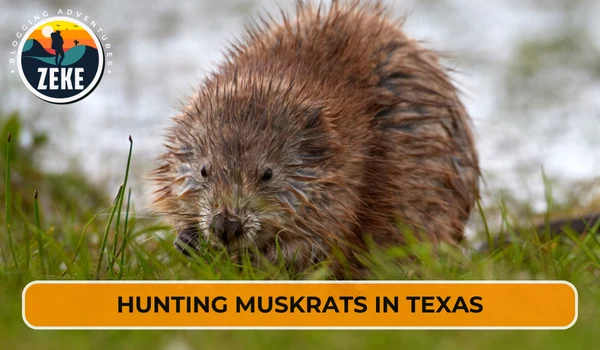
| Species | Dates |
| Muskrat | Nov 01 – Mar 31 |
Raccoon Season
| Species | Dates |
| Raccoon | Nov 01 – Mar 31 |
Otter Season
| Species | Dates |
| Otter | Nov 01 – Mar 31 |
Skunk Season
| Species | Dates |
| Skunk | Nov 01 – Mar 31 |
Ring-tailed Cat Season
| Species | Dates |
| Ring-tailed Cat | Nov 01 – Mar 31 |
Duck Season
| Season | Dates | Zones |
| Regular | Oct 28 – Oct 29, Nov 03 – Jan 28 | High Plains Mallard Management Unit |
| Regular | Nov 11 – Nov 26, Dec 02 – Jan 28 | North Zone |
| Regular | Nov 04 – Nov 26, Dec 09 – Jan 28 | South Zone |
| Youth only | Oct 21 – Oct 22 | High Plains Mallard Management Unit |
| Youth only | Nov 04 – Nov 05 | North Zone |
| Youth only | Oct 28 – Oct 29 | South Zone |
| Veterans/Active Military | Oct 21 – Oct 22 | High Plains Mallard Management Unit |
| Veterans/Active Military | Nov 04 – Nov 05 | North Zone |
| Veterans/Active Military | Oct 28 – Oct 29 | South Zone |
| ”Dusky” Duck | Nov 06 – Jan 28 | High Plains Mallard Management Unit |
| ”Dusky” Duck | Dec 16 – Dec 26, Dec 02 – Jan 28 | North Zone |
| ”Dusky” Duck | Nov 09 – Nov 26, Dec 09 – Jan 28 | South Zone |
| Falconry | Jan 29 – Feb 12 | North Zone |
| Falconry | Jan 29 – Feb 12 | South Zone |
Teal Season
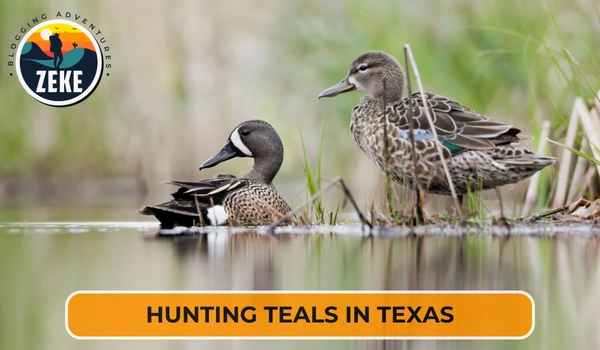
| Species | Dates | Bag Limit |
| Teal | Sep 09 – Sep 24 | 6 per day |
Goose Season
| Season | Dates | Zones |
| Early Canada Goose | Sep 09 – Sep 24 | East Zone |
| Light & Dark Goose | Nov 04 – Jan 28 | East Zone |
| Light & Dark Goose | Nov 04 – Feb 04 | West Zone |
| Light Geese (Conservation Order) | Jan 29 – Mar 10 | East Zone |
| Light Geese (Conservation Order) | Feb 05 – Mar 10 | West Zone |
Rail Season
| Season | Dates | Bag Limit |
| Sora & Virginia Rail | Sep 09 – Sep 24, Nov 04 – Dec 27 | 25 per day |
| King & Clapper Rail | Sep 09 – Sep 24, Nov 04 – Dec 27 | 15 per day |
| Falconry | Jan 29 – Feb 12 | 3 per day |
Moorhen Season
| Season | Dates | Bag Limit |
| Moorhen | Sep 09 – Sep 24, Nov 04 – Dec 27 | 15 per day |
Gallinule Season
| Season | Dates | Bag Limit |
| Purple Gallinule | Sep 09 – Sep 24, Nov 04 – Dec 27 | 15 per day |
Snipe Season
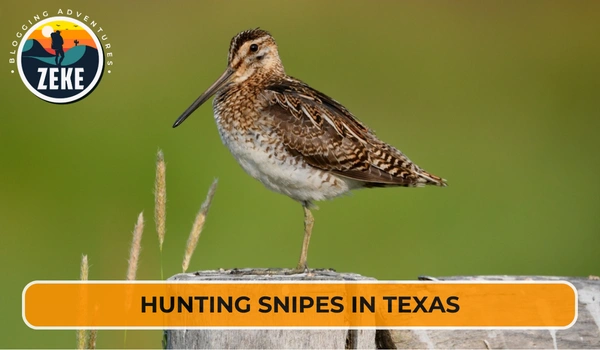
| Season | Dates | Bag Limit |
| Regular Season | Nov 04 – Feb 18 | 8 per day |
Sandhill Crane Season
| Zones | Dates | Bag Limit |
| A | Oct 28 – Jan 28 | 3 per day |
| B | Nov 24 – Jan 28 | 3 per day |
| C | Dec 16 – Jan 21 | 2 per day |
Woodcock Season
| Season | Dates | Bag Limit |
| Regular | Dec 18 – Jan 31 | 3 per day |
| Falconry | Jan 29 – Feb 12 | 3 in total |
Texas Hunting License Information
For anyone hunting in Texas, a valid hunting license is a must-have. It’s crucial to know that if you were born on or after September 2, 1971, you must take a hunter education course before getting your license. This course is available online and in person; it teaches firearm safety, wildlife conservation, and hunting ethics. Once completed, the card obtained will be valid for life.
For Texas residents, there are two main options when picking out a license: the Resident Hunting License ($25) which allows one to hunt all game animals (except migratory birds) and the Resident Super Combo License including fishing rights as well!
If you’re not from Texas, don’t worry – there’s something for everyone with either the Non-Resident General Hunting License ($315) or Special Hunting License (which includes small game privileges). Just remember some species require additional permits like white-tailed deer and turkey so always check up those details first!
Make sure to abide by TPWD regulations while hunting – bag limits vary depending on species plus season dates should also be taken into consideration.
Where Can You Hunt in Texas?
Texas is a hunter’s paradise, with over 145 million acres of land open for public hunting. From the rolling hills of Hill Country to the expansive plains in West Texas, there are plenty of places to explore and hunt on.
State parks and wildlife management areas offer traditional game species like deer, turkey, quail, and dove – just make sure you have your permits before heading out! If you’re looking for something more exotic, try private ranches where experienced guides will take you on guided hunts.
Public Hunting Places in Texas
Angelina National Forest
Hunting in Angelina National Forest is a thrilling experience, with lots of exciting game species to choose from. Whitetail deer, wild hogs, turkey, and small game such as squirrels and rabbits are all plentiful here due to the area’s lush vegetation.
Angelina National Forest provides multiple hunting methods – rifle shooting, bowhunting, muzzleloading, and shotgunning so hunters can pick their preferred style of sport. Plus, there are designated primitive camping areas for those who want to stay close by during their hunt.
As always though, safety should be your top priority when hunting in this forest; make sure you have a valid Texas hunting license before setting out on your adventure and follow all state regulations closely. Knowing the specific rules of the forest will also help ensure that everyone has an enjoyable time while still staying safe!
Sam Houston National Forest
Hunting in Sam Houston National Forest is an adventure like no other. From the majestic white-tailed deer to wild hogs, this 160,000-acre forest offers a challenging and rewarding experience for any hunter. And thanks to its easy accessibility – with multiple entry points and well-maintained roads, you can be sure of getting quickly to your spot without too much hassle.
What truly sets this forest apart though is its strong conservation efforts: Texas Parks & Wildlife Department works together with local hunters to ensure healthy populations of game animals while also preserving the natural environment for future generations. So by participating in hunting here, you’re playing your part in keeping wildlife safe!
Amistad National Recreation Area
Located in the southern region of Texas, Amistad National Recreation Area offers over 58,000 acres of pristine land that is home to an array of wildlife. From white-tailed deer and javelinas to wild turkeys and quails, hunters are presented with a challenging yet rewarding experience due to the rugged terrain and dense vegetation.
Deer hunting is one of the most popular activities available in Amistad NRA with an estimated population of over 10,000 white-tailed deer offering plenty of opportunities for hunters hoping for a trophy buck. The season runs from November through January giving ample time for planning trips or just taking advantage of every moment spent outside during this special season!
Black Gap Wildlife Management Area
Nestled in the heart of Lone Star State, Black Gap WMA encompasses over 100,000 acres of raw wilderness. From rolling hills to deep canyons, this area is home to a plethora of wildlife and offers something for every hunter – from novice to expert.
One species that stands out above all others in Black Gap WMA is the elusive desert bighorn sheep. These majestic animals traverse rocky terrain with ease and offer an exhilarating yet challenging hunt. After hours spent waiting patiently for the perfect shot, you’ll be rewarded with an experience that will stay with you forever when your prey finally appears before you!
But don’t think it ends there – hunters also come here for mule deer, javelina, quail, and even mountain lion hunting opportunities abound due to ample cover provided by the varied landscape.
At Black Gap WMA, safety always comes first; strict regulations are put into place ensuring ethical practices while out on your hunt so as not to disturb or endanger any living creature or habitat during your time here.
Anahuac National Wildlife Refuge
Anahuac National Wildlife Refuge is an ideal spot for experienced and novice hunters alike! With a wide variety of game species like waterfowl, white-tailed deer, feral hogs, alligators, and more – there’s something for everyone to enjoy.
Waterfowl hunting in particular is a popular activity as the refuge has numerous marshes and wetlands providing perfect habitats. White-tailed deer also thrive here making it great for big game hunters.
Plus if you’re brave enough to take on some wild hogs – they can be hunted year-round with no limit on bagging them! Alligator hunting is available during certain times of the year given you have the proper permits.
The wildlife preserve offers a safe and enjoyable experience with designated spaces where visitors won’t disrupt other animals or people in the area while they hunt. For extra convenience, there are plenty of nearby accommodations so your trip will be comfortable from start to finish.
Private Hunting Places in Texas
Private hunting lands in Texas offer a one-of-a-kind experience that can’t be found on public lands. These areas are carefully managed by landowners who take great pride in conserving the environment and providing an abundance of wildlife, from deer to turkey, quail, and rabbit.
Access is typically given through permission from the landowner or via booking with an outfitter; this helps ensure only a limited number of hunters are able to hunt at any given time for an intimate yet personalized experience.
It’s important to remember the rules set by either party beforehand – including bag limits, designated hunting areas, and safety protocols – so you’ll be sure to have successful hunting in Texas.
